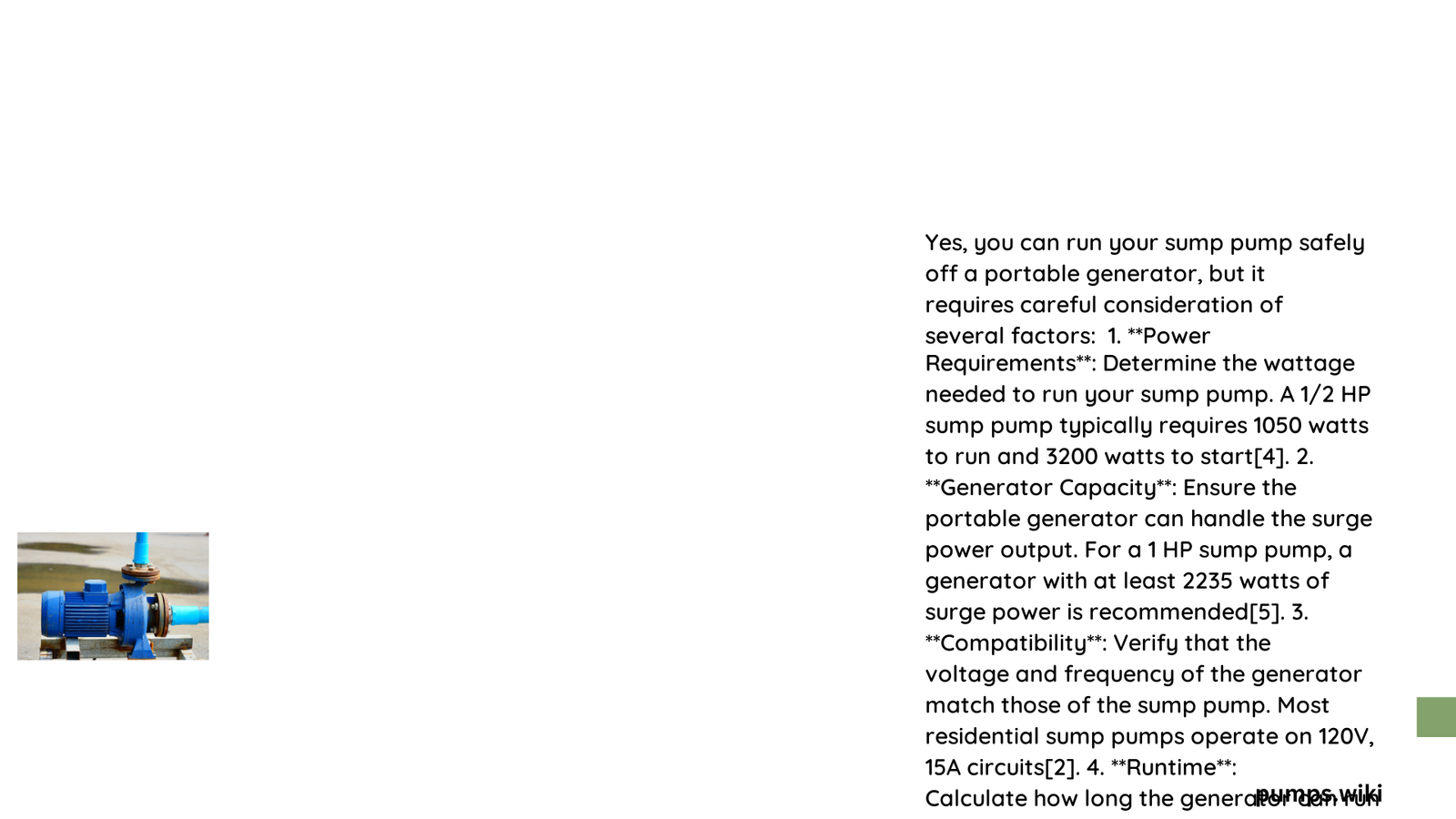When facing potential flooding or power outages, homeowners often wonder about powering their critical basement equipment. Running a sump pump safely off a portable generator requires careful planning, understanding specific power requirements, and implementing proper connection techniques. This comprehensive guide will walk you through the essential steps to ensure your sump pump operates efficiently and securely during emergency situations, preventing potential water damage and protecting your property.
What Power Requirements Do Sump Pumps Demand?
Sump pumps have unique electrical needs that vary based on their type and horsepower. Understanding these requirements is crucial for safe generator operation.
Wattage Breakdown by Pump Type
| Pump Type | Running Watts | Starting Watts |
|---|---|---|
| Pedestal Pump | 500-1,000 | 1,500-3,000 |
| Submersible Pump | 1,000-1,500 | 3,000-4,500 |
| 1/3 HP Pump | 800-1,050 | 1,300-2,900 |
| 1/2 HP Pump | 1,050-1,300 | 2,150-4,100 |
How Much Generator Power Do You Actually Need?
When selecting a portable generator, consider these critical factors:
- Continuous Power Output: Must match or exceed the sump pump’s running watts
- Surge Capacity: Should handle the pump’s startup power requirements
- Recommended Safety Margin: Add 20-25% extra capacity beyond calculated needs
What Connection Methods Ensure Safe Operation?

Proper connection is paramount to prevent electrical hazards and equipment damage.
Essential Safety Techniques
- Use a Transfer Switch
- Prevents dangerous backfeeding
- Provides clean, safe power transition
-
Recommended by electrical safety experts
-
Select Appropriate Extension Cords
- Minimum 12-gauge heavy-duty cord
- Outdoor-rated
- Length under 50 feet for minimal voltage drop
What Precautions Should You Take?
Electrical Safety Checklist
- [ ] Verify generator wattage matches pump requirements
- [ ] Inspect all electrical connections
- [ ] Use ground fault circuit interrupter (GFCI)
- [ ] Keep generator in well-ventilated area
- [ ] Avoid running generator indoors
How Do You Calculate Your Specific Power Needs?
To determine your exact requirements:
- Check sump pump manufacturer’s specifications
- Measure current running watts with a wattmeter
- Calculate peak startup watts
- Add 25% buffer for safety
Pro Tips for Reliable Performance
- Regular Maintenance: Service generator and sump pump annually
- Test Setup: Simulate emergency conditions periodically
- Backup Battery: Consider additional battery backup systems
What Are Common Mistakes to Avoid?
- Underestimating power requirements
- Using inappropriate extension cords
- Neglecting generator maintenance
- Improper generator placement
- Skipping transfer switch installation
Conclusion
Running a sump pump safely off a portable generator is achievable with proper planning, understanding electrical requirements, and implementing recommended safety practices. Always prioritize equipment compatibility and follow manufacturer guidelines.
